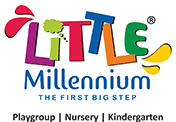
Importance Of Art And Craft In Early Childhood Education
Every child is an artist. The problem is how to remain an artist once he grows up. –Pablo Picasso
Art and Craft is a process of exploring, discovering, experimenting and creating. This process holds great value for young children, for it allows them to be creative, imaginative, spontaneous and expressive, all without any kind of inhibition. Simple creative activities engage a child’s senses and are important building blocks of early childhood education and child development.
We all know that creating and appreciating visual art enhances creativity, imagination, and self-esteem, but studies have shown that art and craft activities can also increase a child’s cognitive and social development skills. Art can be an important link in developing the crucial thinking skills and also the motivation that children need to succeed at higher levels.
Building key developmental skills through Art and Craft
Motor Skills: Drawing with a pencil, painting with a brush or doodling with a crayon, are vital to the growth of fine motor skills in young children. Similarly using scissors for a craft activity helps develops the dexterity children will need for writing in later years.
Language Development: Making and talking about art, or describing their own creation, helps children to learn new words, as well as fosters their language and communication skills. It also prompts them to express their feelings without inhibition.
Cognitive Development: According to studies, art strengthens problem-solving and critical-thinking skills children during early age. Making art offers children a multitude of choices and an experience in decision making, which is a crucial skill required for future success. Thinking, experimenting and creating new ideas will also foster creativity.
Visual Processing: Craft activities like, sculpting with clay, weaving, threading, origami or other paper crafts, all develop visual-spatial skills, which is the ability to mentally manipulate two, three and four-dimensional figures. Strong spatial skills will help young learners in science, technology, engineering, and mathematics. Playing with colours, patterns, textures, shapes and forms, also encourages perceptual.
Inventiveness: The 21st century needs people with right brain qualities – people who can visualise, problem solve, understand others’ viewpoints, think creatively, and innovate or invent new things. Art is a way to encourage creative and innovative perspectives on things and situations. Expressing, experimenting and taking risks while making art and craft fosters right brain characteristics like innovation and creativity in children.
Let your child play and engage in art & craft activities, as it is more than just play, after all, play is also a form of learning.
